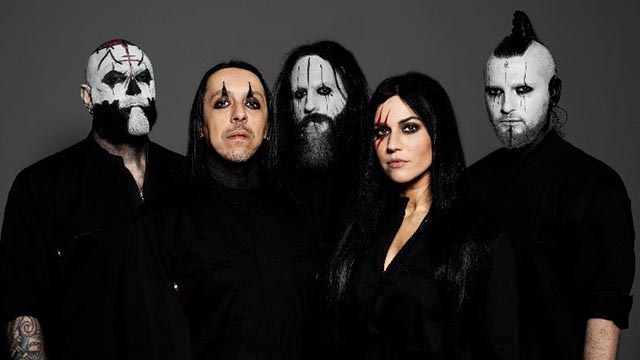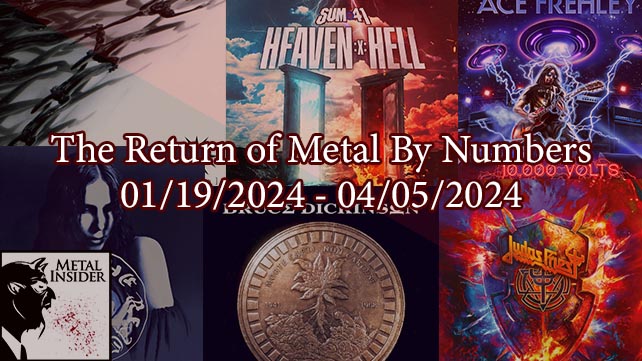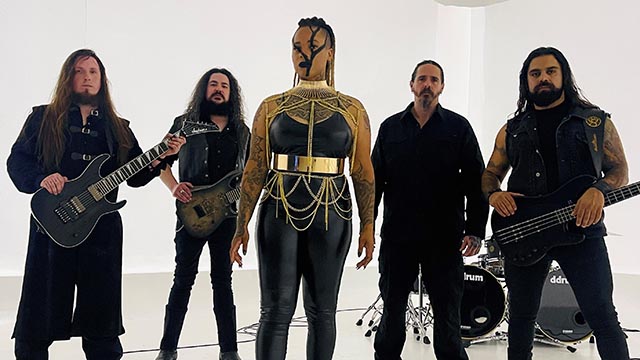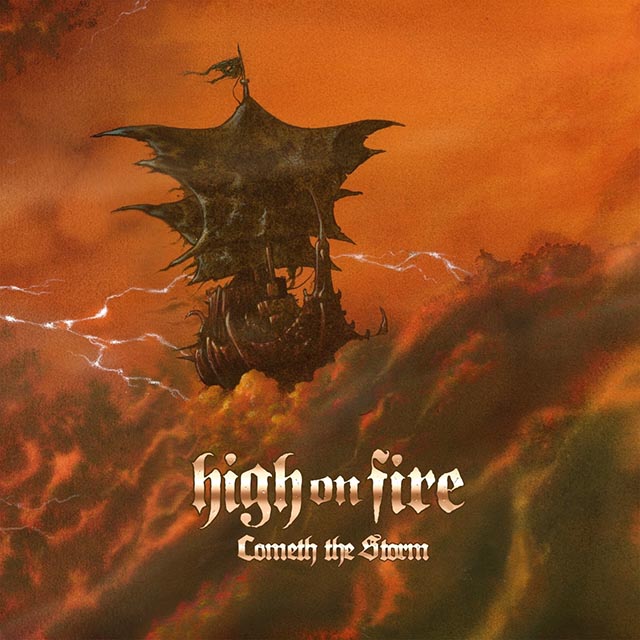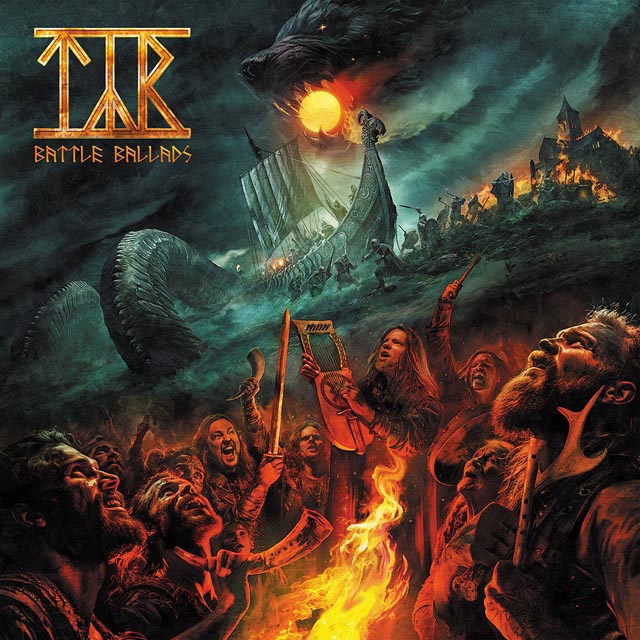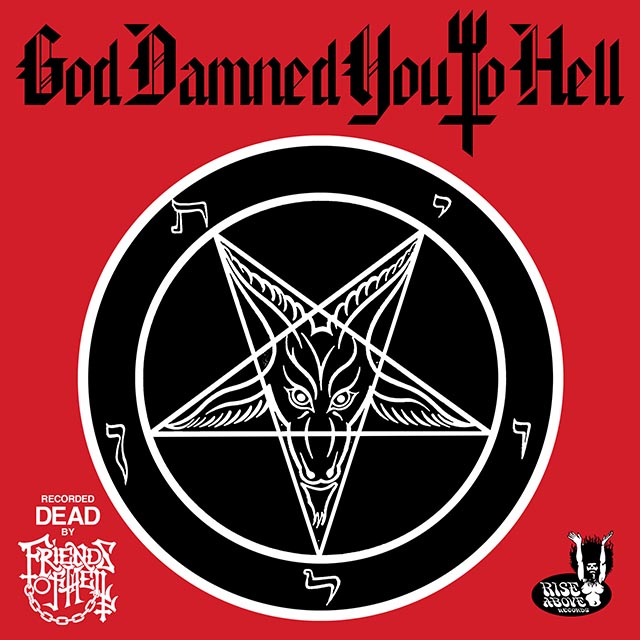
Shining is a band many have read about but few have actually experienced. While I’m generally a fan of the heavier variety of Scandinavian metal, a tour that was billing itself as the “No More Safe Space Tour” is one I had to see. I’m a firm believer in freedom of expression and free speech – no matter if its labeled as “transgressive” or called something that lacks cultural and artistic value – as many in the metal community (mis)characterize a great deal of European black metal. I have no problem admitting that Shining’s bluesy brand of Danzig-inspired hard rock appeals to me, as does the musicianship of Niklas Kvarforth’s bandmates who routinely give it all, and, frankly, perform under obvious pressure and harassment of their lead vocalist.
As a veteran of countless black metal shows in both North American and Northern Europe, and an avid follower of the debates surrounding the dictatorial-like shutdowns of Marduk and Taake shows in the US by Antifa fascists, I did come prepared with a mask, extensively large hat and full coverings from head to toe in case anyone from Antifa decided to gas the event and thereby nullify my own decision to experience Shining – and at the same time negate the desires of the paying audience, the promoters, the venue and the residents of Trenton who live near the venue. Now, the three Trenton police officers who walked into the venue before Shining took the stage probably made anyone who was going to attempt a violent disruption think twice. Notably, the cops did have to step in when there was an altercation between two patrons who were arguing over what type of dancing was “appropriate” in the pit during the Revenge set (hardcore style or traditional circle pit – jury is still out.)
I have seen Niklas perform in Scandinavia and I was looking forward to seeing him for the first time in the United States. As he informed the audience, it took him 20 years to be able to come here and perform legally. Yes, Niklas does indeed cut himself and many of his wounds are not merely “superficial” as anyone in the venue will attest to. While people have accused Niklas of a variety of hoaxes, the stark reality is that he suffers from serious medical ailments and he expresses his pain through his music and his performance. That might not be pleasant for many, but there are clearly fans that do see value in it and a good number of those were in the Trenton venue.
When Niklas took the stage it did indeed appear to me that he was intoxicated. Not merely “drunk” or “buzzed,” but the type of intoxication that you makes you really uncomfortable to be around. I’ve read accounts of people experiencing Shining live and I’d agree with some of the accounts that mention that there is this “odd” feeling attending a Shining show that one doesn’t necessarily feel at even more intense (musically and visually) black metal bands performances. I’ve seen so many black metal shows with bands like Mgla, Sargeist, Taake, Behexen, & Blood Tsunami in so many challenging venues. I’ve been up front and tear-gassed at GWAR, and I grew up going to NYHC shows blocks away from my family’s former tenement in the Lower East Side, but I will say, it was a very disturbing feeling, even for a veteran of the scene to be around Shining. There is a feeling of anticipation that something violent or bad is going to happen and I wasn’t the only one who picked up on it. A number of people had left the venue after the first song because they either didn’t completely know what they were in for or believed it was not going to go particularly well for them to remain. And that’s ok. I stopped watching Star Wars: The Phantom Menace for similar reasons.
The band went through a set that was close to 90 minutes. They played a couple of their newer songs off of Everyone, Everything, Everywhere, Ends as well as a number of fan-recognized tracks from their last few records. Niklas… so what he does is make you uncomfortable because he’s all over the place and you have no idea what he’s going to do next. You see his wounds on his arms and you probably don’t want his blood on you – if it comes down to that. This isn’t Watain (who isn’t exactly for the faint of heart either) where the blood is salted and comes from an animal; there is the potential here to come into contact with untreated human blood. Even some members of the opening bands looked genuinely uncomfortable around Niklas during his performance and took a lot of steps back. Niklas came out into the crowd nearly every song. He kissed people, hugged people (for a long time) licked people, took people’s drinks and drank from them, etc. He made many uncomfortable. Some people in the very front and center were into it and obviously didn’t care; even looking forward to it. People on the periphery often tried to get out of the way. Sometimes it worked and sometimes it didn’t. I watched as Niklas zero’ed in on really burly gentleman (about 6’4″, 275-290)… and this guy literally just headed towards the back door when Niklas went over to him – and he just kept on walking – through to the exit. Niklas followed him to the doors and then turned around and found someone else. Niklas was all over the sound engineer in the back (sitting on his lap), his guitar player, and anyone who seemed freaked out by him. It was, at times, out of the GG Allin playbook but without the human feces and much better musicianship (apologies to Dee Dee Ramone and the Jabbers).
The band itself is quite good – even without long-standing member Huss playing guitar this tour (he is recovering from an injury back home). Fill-in Benny Bats did a tremendous job on the rhythm parts. The solos and cohesiveness among the players was excellent. For people who like some danger and fear with their GNR and Led Zeppelin, it’s not a bad show at all. (The band aptly opens with a short rendition of “Welcome to the Jungle.”) Niklas’ live vocals, unfortunately, are off balance at his performances and listeners will not get to hear the full extent of his rather extensive vocal range in his recorded work. They will, however, get a show.
With the recent controversy about Niklas giving the alleged “Sieg Heil” salute before a recent show and the rumors about Niklas’ supposed Nazi-sympathies, it’s important to discuss the composition of the audience. Interestingly, there appeared to be as many Latino fans as there were white fans and there were a very good number of people of color at the show and in the greater venue. In fact, there was a clear mix of people in terms of ethnic background on both the side of the stage and in the front two rows. Niklas (and the Revenge guys for that matter) had no issue embracing fans from all walks of life. There were clearly members of the LGBT community there who were fans of the music – with open displays of affection. In fact, there was a giant rainbow flag displayed inside the venue itself. I observed the modest crowd closely the entire performance and nobody seemed to care one bit about anyone’s race and sexual orientation and nobody gave anyone trouble in this regard – at least that I witnessed both inside and outside of the venue. This is consistent with my observations and experiences at other “questionable” events where certain artists have been stigmatized as Nazis, fascists or racists – such as Taake, Marduk, Mayhem etc. While many critics are quick on the draw to write the explosive headline “outing” someone as a racist, the reality is often quite different from the thin-sliced and ill-informed perceptions based on extremely limited information or vastly outdated pieces about the artists in question. Let’s not forget that the same misdirected labeling happened to Slayer, Ozzy Osbourne and Judas Priest at the hands of the media in the 1980’s when these bands were reported to incite devil worship and suicidal tendencies. Now don’t get me wrong, there are racists and bigots in the scene – Varg Vikernes and the many bands that clearly have embraced NSBM – as one might find in Ukraine or other parts of the European underground. In my own travels studying NSBM, I have found NSBM bands and promoters to be rather upfront about their beliefs and dispositions. Contrast that with Taake’s last show at Reggie’s in Chicago where I stood amongst a wealth of married same-gender couples in the front three rows as well as a larger audience that reflected a broader level of inclusion than found on many university admission websites.
Overall, I’d say there was a core group of people who wanted to be up close and personal with Niklas and that’s understandable. Whether you love Shining or you despise them…. whether you support safe spaces or you don’t, it’s difficult to overlook the connection that many have to Shining’s art. Indeed the lyrics are depressing, the images are violent and there is a good amount of “shock for the sake of shock” involved, however, like Shining’s contemporaries, there is value, substance and even beauty in Shining’s music. With this, there is a clear divide between what Second Wave black metal is (and remains to be in some circles) and the evolution of black metal in the United States. Whether American black metal bands such as Deafheaven, Krallice etc. decided to market themselves as “black metal” or if the label was pushed on them by overzealous publicists looking to jump on the coattails of Abbath, there is a world of difference not only in musical styles but in content, art and disposition. This has lead to confusion about what “black metal” is. For newcomers and the uninitiated, black metal might be seen as the Brooklyn scene, teeming with friendship and camaraderie. Shining, who now does NOT want to called “black metal,” clearly embraces the more traditional misanthropic themes and elements of 1990’s Norway. Shining is not going to get an endorsement from Ray Ban sunglasses and they’re not going to alter their art, censor themselves or even attempt to act in a manner that lends itself to any semblance of political correctness or community building. Rather, as misanthropes, political incorrectness is embraced, as is a performance that is not going to hold back. There is a deliberate, legitimate risk to Second Wave black metal and there always has been. Indeed there are many who are seeking that risk – that type of experience. If we can take anything away from Shining’s recent forays into the US, its that there are music scenes that are dangerous and unpredictable and that there are individuals who, for better or worse, are looking to get a taste of it. In this respect, Shining does not and will not disappoint.
The views of Jeff Podoshen in this piece do not necessarily represent that of any organizations, universities, firms or colleges that he is affiliated with.


